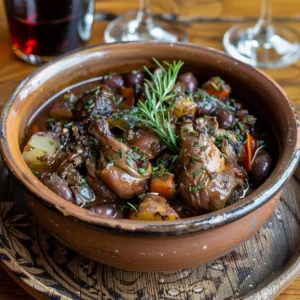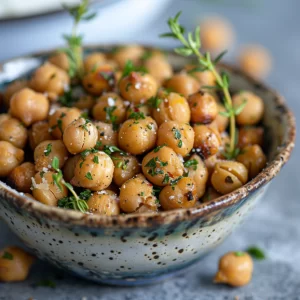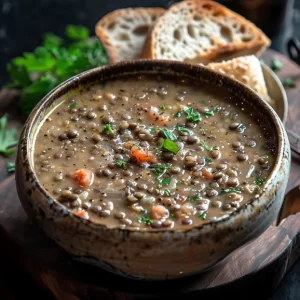Have you ever wondered how the rhythms of the seasons influence the symphony of flavors in Greek cuisine? As we embark on a Greek culinary journey together, we’ll explore how each season brings a unique palette of ingredients that shape the vibrant world of Greek cooking traditions. Seasonal Greek recipes reflect the heart and soul of Greece, from the rejuvenating greens of spring to the comforting stews of winter. Join me as we discover the diversity of flavors that grace Greek tables throughout the year and learn to appreciate the art of cooking with what’s fresh and in-season.
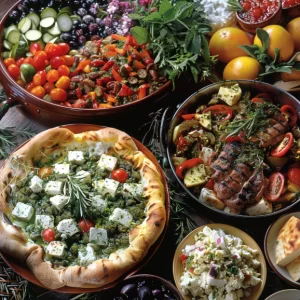

Key Takeaways – Seasonal Greek Recipes
- Understand how seasons impact Greek cuisine flavors.
- Explore traditional seasonal Greek recipes.
- Discover the diverse ingredients used in each season.
- Gain insights into Greek cooking traditions.
- Learn to appreciate the benefits of seasonal eating.
- Start your Greek culinary journey with fresh, in-season ingredients.
Understanding the Role of Seasons in Greek Cuisine
The essence of Greek cuisine lies deeply rooted in the harmonious interplay between the changing seasons and culinary practices. By closely observing the Greek cooking seasons, one can truly appreciate the unique flavors that each time of year brings to the table. This rhythm is not just a mere tradition, but a way of life that encompasses the broader cultural and ecological landscape of Greece.
During each season, the availability of ingredients shifts, reflecting the rich and varied nature of the Mediterranean environment. This natural ebb and flow are mirrored in the dishes that grace Greek households, creating a perfect synergy between nature and gastronomy. The concept of seasonal dining ensures that meals are always fresh, nutritious, and bursting with local flavors.
The traditional Greek diet is a beautiful tapestry woven from seasonal produce, ensuring that meals are both delicious and healthful. The culinary calendar of Greece revolves around this principle, with each season bringing a bounty of different fruits, vegetables, and herbs that are celebrated and utilized to their fullest potential.
For example, spring brings an abundance of fresh greens and herbs, while summer offers juicy tomatoes and succulent melons. Autumn showcases the harvest of nuts and grapes, transitioning to the hearty root vegetables and legumes of winter. These Greek cooking seasons create a dynamic culinary experience where every meal tells a story of the land and its cycles.
| Season | Main Ingredients | Popular Dishes |
|---|---|---|
| Spring | Greens, herbs, asparagus | Spanakopita, lamb with greens |
| Summer | Tomatoes, cucumbers, melons | Greek salad, stuffed peppers |
| Autumn | Grapes, nuts, root vegetables | Moussaka, grape leaves stuffed with rice |
| Winter | Legumes, citrus fruits, root vegetables | Fasolada, orange and olive salad |
This natural alignment with the culinary calendar not only makes Greek cuisine immensely flavorful but also ensures sustainability and a deep respect for nature’s cycles. By embracing this tradition, one can savor the true essence of Greek culture in every bite.
Spring Delights: Fresh and Flavorful Seasonal Ingredients
Spring is the perfect time to explore the vibrant flavors of Greek cuisine, as the season brings a bounty of fresh herbs and seasonal vegetables. With every dish, I find myself marveling at the way these ingredients come together to create a symphony of tastes and textures.
Traditional Spring Greek Dishes
When it comes to Spring Greek recipes, a few traditional dishes immediately come to mind. Spanakopita, for example, features layers of phyllo dough stuffed with a mixture of fresh spinach, dill, and feta cheese. Another favorite is Magiritsa, a unique lamb and greens soup often enjoyed during Easter celebrations. Each dish beautifully showcases the harmony of fresh herbs and the natural goodness of seasonal vegetables.
Springtime Seasonal Greek Vegetables
As the earth awakens from its winter slumber, Greek markets overflow with an array of seasonal vegetables. Artichokes, fava beans, and asparagus stand out as springtime stars. I love how Greeks incorporate these vegetables into their meals, from simple grilled asparagus with lemon and olive oil to artichokes a la Polita, which combines artichokes with carrots, peas, and potatoes in a delightful lemon sauce. The freshness of these ingredients not only enhances the flavors but also adds a burst of color to every plate.
Medicinal Herbs in Spring Greek Cooking
Spring is an ideal season to celebrate the power of fresh herbs in Greek cooking. Herbs such as dill, mint, oregano, and parsley are not just flavor enhancers; they also offer numerous health benefits. Dill, for instance, is known for its digestive properties, while mint can provide relief from headaches and nausea. Using these fresh herbs in dishes like tzatziki, a refreshing yogurt and cucumber dip, or adding them to a simple Greek salad not only elevates the taste but also infuses the meal with wellness-boosting qualities.
Embracing the essence of spring through these Spring Greek recipes not only delights the palate but also nourishes the body, making it a joyous season for anyone who loves to cook and eat healthily.
Summer Treats: Light and Refreshing Seasonal Greek Recipes
Embrace the warmth and sunshine of the Mediterranean summer with a selection of light and refreshing Greek recipes. From crisp summer salads to luscious Greek fruit recipes and savory grilled dishes, Greek cuisine is perfect for enjoying the season’s freshest flavors.
Popular Summer Salads
Greek summer salads are a burst of color and flavor. Classic options like the Horiatiki, or Greek Village Salad, combine ripe tomatoes, cucumbers, onions, feta cheese, and olives, all drizzled with olive oil and sprinkled with oregano. Another refreshing choice is the watermelon and feta salad, which balances the sweetness of watermelon with the salty feta, mint, and a splash of lime juice.
Cooking with Seasonal Fruits
Seasonal fruits are the stars of many traditional and modern Greek dishes. From apricots and peaches to figs and grapes, these fruits can be incorporated into both savory and sweet recipes. A favorite Greek fruit recipe is Greek yogurt topped with honey and fresh figs, offering a simple yet delicious treat. Another delightful option is grilled peaches with honey and yogurt, a tantalizing blend of smoky and sweet flavors.
Grilled Dishes Perfect for Summer
Greek grilling brings out the best in seasonal ingredients, infusing them with a smoky aroma that is hard to resist. Grilled vegetables like eggplant, zucchini, and bell peppers are often served with a touch of olive oil and lemon. Seafood such as octopus and sardines also take center stage in Greek grilling, marinated in herbs and olive oil before being cooked to perfection. A Greek summer meal isn’t complete without souvlaki, skewers of marinated meat or vegetables that are a perfect blend of flavors.
| Dish | Main Ingredients | Preparation Method | Serving Suggestions |
|---|---|---|---|
| Horiatiki Salad | Tomatoes, cucumbers, onions, feta, olives | Chop and mix with olive oil, oregano | Serve chilled |
| Watermelon & Feta Salad | Watermelon, feta, mint, lime juice | Combine and toss gently | Serve immediately |
| Grilled Peaches | Peaches, honey, yogurt | Grill peaches, drizzle with honey | Top with yogurt |
| Souvlaki | Meat or vegetables, olive oil, herbs | Marinate, skewer, and grill | Serve with pita and tzatziki |
Harvest Celebrations: Autumn’s Bounty in Greek Cooking
As the warm days of summer give way to the crisp, cool air of autumn, Greek cuisine transforms to honor the seasonal harvest. The abundance of fresh, fall ingredients makes this time of year particularly special in Greek kitchens. From hearty stews to dishes incorporating the rich flavors of root vegetables, mushrooms, and leafy greens, autumn Greek dishes are crafted to warm the soul and celebrate the bounty of the season.
Rich and Tasty Autumn Stews
Greek stews take center stage in the autumn culinary scene. Combining an array of seasonal ingredients, these dishes are rich, flavorful, and hearty enough for cooler weather. One beloved stew is fasolada, a white bean soup that is both nutritious and comforting. The slow-cooked beans, combined with tomatoes, carrots, and celery, create a medley of flavors that epitomize autumn Greek dishes. Another favorite is stifado, a robust beef stew made with onions, tomatoes, and a splash of red wine, simmered to perfection. These stews capture the essence of the Greek kitchen during autumn, showcasing how the seasonal harvest is utilized to its fullest.
Seasonal Greek Ingredients for Fall
The magic of autumn Greek dishes lies in their ingredients. The seasonal harvest brings a plethora of vegetables and herbs that are integral to fall recipes. Root vegetables such as carrots, potatoes, and beets add depth and color to various dishes. Squash varieties, like pumpkin, are often incorporated into savory pies and soups, offering a subtle sweetness and creamy texture. Additionally, leafy greens like spinach and cabbage are prominently featured, often cooked down in stews or baked into phyllo dough for savory pies. Fresh herbs, including dill, parsley, and mint, provide a burst of freshness and elevate the overall taste profile of these autumnal meals.
The Comfort of Greek Winter Stews
Winter in Greece is a magical time, when the warmth of home and the heartwarming nature of food come together to create a haven from the cold. There’s something incredibly soothing about a bowl of rich, hearty stew enjoyed while the wind howls outside. As I cozy up to my favorite winter stew recipes, I am reminded of the strong sense of community and comfort intrinsic to Greek cuisine.
One of my treasured dishes during these months is kreatosoupa, a robust meat stew brimming with vegetables and spices that fill the house with an irresistible aroma. This quintessential Greek comfort food is a staple in many households, bringing families together around the dinner table to share both food and stories.
“There’s no place like a Greek kitchen in winter, where the heartwarming scents of slow-cooked stews fill the home with comfort and joy.” – Me
Greek winter stews typically feature a variety of ingredients that not only highlight the richness of the dish but also provide nourishment during the colder months. Staples like lamb, beef, or chicken pair effortlessly with root vegetables such as carrots, potatoes, and parsnips. Fresh herbs like thyme and rosemary add a fragrant touch, while hearty greens like spinach or kale enhance the nutritional value.
One of my personal favorite winter stew recipes is fakes soupa, a traditional Greek lentil stew. Known for its simplicity and depth of flavor, fakes soupa incorporates lentils, onions, garlic, and a splash of vinegar for an invigorating zest. It’s a popular dish not just for its taste but also for its ability to warm you from the inside out.
As we embrace the chilly weather, these stews stand as a testament to the spirit of Greek comfort food. They are more than meals; they are cherished rituals that nurture our bodies and souls alike. There’s nothing quite like gathering around a steaming bowl of stew, feeling the warmth spread from the first bite to the very core of your being.
Seasonal Greek Recipes for Festive Occasions
Greek celebrations are renowned for their vibrant and flavorful dishes that reflect the rich cultural heritage of the country. Festive Greek recipes are often prepared with seasonal ingredients that highlight the best of what each time of year has to offer. From Easter to Christmas, holiday cooking in Greece is a sensory delight, steeped in tradition and flavor.
During Easter, the most significant religious holiday in Greece, magiritsa, a traditional lamb soup made with fresh herbs and greens available in spring, is a staple. The main Easter feast usually features kokoretsi, a dish of seasoned and skewered lamb offal, and arní sti souvla (lamb on a spit), cooked to perfection over an open fire.
Christmas in Greece is similarly marked by a variety of mouthwatering dishes that celebrate the bountiful winter harvest. Holiday cooking often includes the preparation of melomakarona and kourabiedes, two types of cookies made with honey, nuts, and festive spices. Another beloved Christmas dish is Christopsomo (Christ’s bread), an artisanal bread decorated with intricate designs symbolizing various aspects of rural Greek life.
Let’s take a closer look at some iconic festive Greek recipes tied to these traditional celebrations:
| Festive Occasion | Traditional Dishes | Key Seasonal Ingredients |
|---|---|---|
| Easter | Magiritsa, Kokoretsi, Arní sti souvla | Spring herbs, lamb, greens |
| Christmas | Melomakarona, Kourabiedes, Christopsomo | Honey, nuts, winter spices |
The beauty of festive Greek recipes lies in their ingenious use of seasonal ingredients, which not only enhance the dishes’ flavors but also add a cultural touch to holiday cooking. Whether it’s the freshness of spring herbs or the warmth of winter spices, these ingredients play a pivotal role in bringing out the essence of traditional celebrations, making each festival meal truly memorable.
Incorporating Seasonal Ingredients into Everyday Cooking
Embracing seasonal ingredients in our daily cooking not only enhances the flavor and nutritional value of our meals but also connects us with nature’s cycles. In Greek cuisine, this practice is a cornerstone, fostering a deeper appreciation for the freshest produce and its myriad benefits.
Benefits of Seasonal Eating
There are numerous seasonal eating benefits that greatly impact our health and well-being. Freshly harvested produce tends to be at its peak in nutrition and flavor, ensuring that we get the most out of our meals. Additionally, seasonal eating often means we are consuming produce that hasn’t traveled far, reducing the carbon footprint associated with long-distance transportation.
By focusing on what’s in season, we support local farmers and the economy, promoting sustainable agricultural practices. Furthermore, the natural cycle of seasonal eating encourages a varied diet, helping us to discover and enjoy different fruits, vegetables, and herbs throughout the year.
How to Source Fresh Ingredients
Successfully sourcing ingredients is key to making the most of seasonal eating. Greek market shopping offers a vibrant and rewarding experience, allowing us to directly connect with farmers and vendors. Here are some tips to ensure you bring home the best ingredients:
- Visit local farmers’ markets early in the morning to get the freshest produce.
- Inquire about the origins and harvesting practices to understand the quality and seasonality.
- Look for cooperative markets where farmers come together to offer a diverse range of seasonal products.
- Be open to trying new produce that you may not have used before; Greek markets often feature unique seasonal items.
By incorporating seasonal ingredients into our everyday cooking, we not only enjoy richer, more flavorful meals but also contribute to a sustainable food system. Greek market shopping exemplifies this tradition, making our dining experience both meaningful and delicious.
Tips for Cooking Seasonal Greek Recipes at Home
Bringing the vibrant and rich flavors of Greece into your home is a delightful journey that anyone can embark on. To ensure your Greek cooking ventures are successful, it’s important to equip your kitchen with the right tools and stocks. Let me guide you through some fundamental Greek cooking tips to help you achieve culinary excellence.
Essential Kitchen Tools
You don’t need to have a high-end kitchen to create authentic Greek dishes, but having a few essential kitchen tools can make all the difference. A quality olive oil dispenser is crucial, given olive oil’s central role in Greek cuisine. A mortar and pestle are invaluable for grinding spices and herbs, allowing their full flavors to emerge. Additionally, consider investing in a good set of knives, a heavy-bottomed pot for stews, and a grill pan to replicate the savory grilled flavors that are signature to Greek cooking. These kitchen tool essentials will make your cooking experience more efficient and enjoyable.
Basic Greek Pantry Staples
To get started with seasonal Greek recipes, stocking your pantry with some basic Greek staples is essential. Olive oil, of course, is non-negotiable. Other must-haves include dried oregano, thyme, and rosemary—common herbs in Greek dishes. Feta cheese, olives, and capers also play significant roles. Don’t forget grains like bulgur and orzo, as well as legumes such as lentils and chickpeas, which are foundations of many traditional recipes. These Greek pantry staples will ensure you’re always prepared to whip up a delicious Greek meal that embodies the essence of the country’s seasons.
With these tools and ingredients, cooking Greek seasonal recipes at home becomes an accessible and rewarding endeavor. So, let’s roll up our sleeves and bring the vibrant flavors of Greece to our own dining tables, no matter where we are!
FAQ
What makes Greek cuisine unique throughout the seasons?
How do the changing seasons influence Greek cooking traditions?
What are some traditional spring Greek dishes?
What seasonal fruits are commonly used in Greek summer salads?
What are some characteristic dishes for Greek autumn cuisine?
What defines a traditional Greek winter stew?
Are there special Greek recipes for festive occasions?
What are the benefits of eating seasonal ingredients?
Where can I source fresh seasonal ingredients for Greek cooking?
What kitchen tools are essential for cooking Greek recipes at home?
What are some basic pantry staples for Greek cuisine?
Welcome to “Cooking with Greek People,” your go-to YouTube channel for discovering the rich, flavorful, and diverse world of Greek cuisine! Whether you’re a seasoned chef, a home cook, or someone who just loves great food, our channel is designed to bring the heart of Greece into your kitchen.
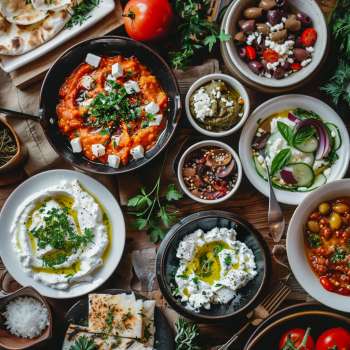


Healthy Greek Cooking for Modern Lifestyles
Greek cuisine is evolving with modern twists on traditional dishes, blending Mediterranean flavors with global influences. From quinoa moussaka to lentil dolmades, these recipes cater to health-conscious diners while preserving authentic tastes. Greek fusion recipes combine the bold flavors of Greece with the aromatic profiles of Asian ingredients, offering unique culinary experiences like miso-glazed lamb souvlaki and tzatziki-stuffed chicken skewers.
Vegan Greek recipes are transforming traditional dishes into plant-based versions, highlighting the versatility of Greek ingredients. For more details and recipes, visit the following links: Modern Greek Recipes, Modern Greek Salads, Easy Greek Dinners, Greek Breakfast Recipes, Greek-Inspired Cocktails, Greek BBQ Recipes, Greek Snack Recipes, Greek-Inspired Soups, Greek Pasta Dishes, and Greek-Inspired Pizza.



Healthy Greek Cooking for Modern Lifestyles
Greek cuisine is evolving with modern twists on traditional dishes, blending Mediterranean flavors with global influences. From quinoa moussaka to lentil dolmades, these recipes cater to health-conscious diners while preserving authentic tastes. Greek fusion recipes combine the bold flavors of Greece with the aromatic profiles of Asian ingredients, offering unique culinary experiences like miso-glazed lamb souvlaki and tzatziki-stuffed chicken skewers.
Vegan Greek recipes are transforming traditional dishes into plant-based versions, highlighting the versatility of Greek ingredients. For more details and recipes, visit the following links: Modern Greek Recipes, Modern Greek Salads, Easy Greek Dinners, Greek Breakfast Recipes, Greek-Inspired Cocktails, Greek BBQ Recipes, Greek Snack Recipes, Greek-Inspired Soups, Greek Pasta Dishes, and Greek-Inspired Pizza.
Author: Bob
With over 20 years in Bioinformatics and AI in Molecular Diagnostics, Bob Stavrou advises BiCos, focusing on authenticating OLIVE OIL DNA. He's also a passionate contributor to YouTube Cooking with Greek People and appeared on Greek TV show Savvatokiriako Me Ton Manesi, bridging science and culinary arts. Watch it on Alpha TV.



